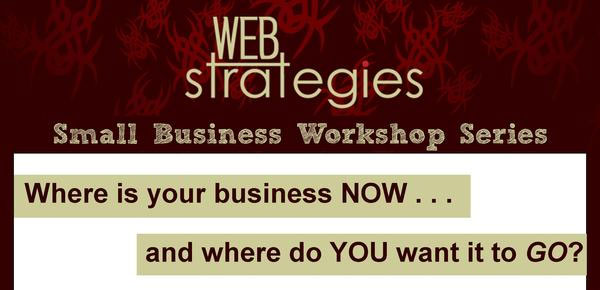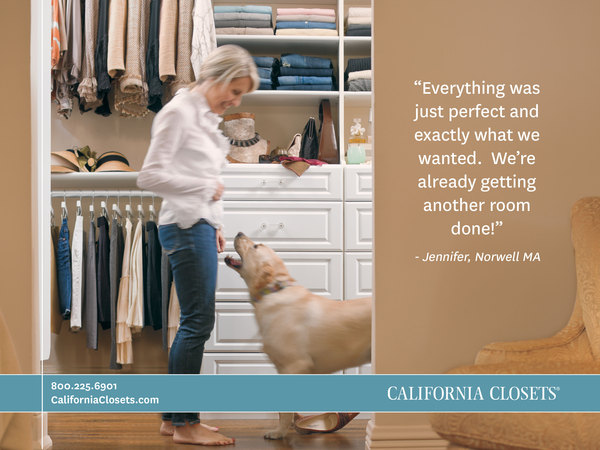Should You Use Rhetorical Questions in Advertising?
 Have you ever noticed how many questions you are asked on a daily basis, not just from the people around you, but in the media you consume? Do you ever stop to wonder if these rhetorical questions really help to drive conversions and sales? Isn’t it kind of annoying to be bombarded with questions that you are unable to directly answer?
Have you ever noticed how many questions you are asked on a daily basis, not just from the people around you, but in the media you consume? Do you ever stop to wonder if these rhetorical questions really help to drive conversions and sales? Isn’t it kind of annoying to be bombarded with questions that you are unable to directly answer?
Questions are one of several rhetorical devices commonly used in advertisements. When utilized correctly, they can be a boon to your copywriting—they engage your audience and help persuade them to come to a conclusion on their own, which has a greater effect then simply telling the audience to do something.
However, questions are often used incorrectly in copywriting, tarnishing the brand and the message that they want to convey. Some copywriters will tell you to never use rhetorical questions, while others claim that they’re the key to your success.
When should you ask questions?
The important thing to remember about using rhetorical questions in advertising is that it’s an advanced technique; greener copywriters can often overuse questions to the detriment of their message. It takes a careful hand to use questions in a way that won’t immediately turn off your audience, so it’s not a decision to be taken lightly.
For starters, if you ask the wrong kind of questions, it can actually damage your brand, making it seem untrustworthy. We’ve all seen those advertisements that bombard you with questions like “Do you want to make quick, easy cash?” or “Do you want to lose 20 pounds in two weeks?” Savvy consumers avoid these types of hyperbolic sales pitches—the language will turn them right off.

You’ve probably seen plenty of ads with salesy, untrustworthy questions like this one.
However, when used correctly, questions can really help to capture the reader’s attention, making your brand seem engaging and honest.
Consumer research seems to suggest that the persuasiveness of rhetorical questions in advertising can vary wildly depending on your audience and the strength of your argument. In the end, only you can really know if you feel confident enough to ask your audience a question, but if you’re going to do so, you should at least try to recognize when it will be most effective.
-
When you already know the answer
The only time you should really ask a question in your advertisement is when you can make a relatively accurate prediction of what the answer will be—and in most cases, the answer you’re looking for should be “yes.”
The simple act of saying “yes” has a positive effect on your brain, boosting oxytocin levels and putting your mind in a healthier, more receptive state. Getting your audience to mentally say “yes” to themselves early on makes them more likely to say “yes” when you put forth your call to action. The moment your audience can respond with “no” when you want them to say “yes,” you’ve lost them for good.

You can sometimes guide your audience’s responses by including an answer within the actual question.
One way to ensure that your audience responds in the affirmative is to provide the answer along with the question itself. For example, a children’s clothing store might use a headline that says “Kids grow up so quickly, don’t they?”
In this case, the answer is included within the question itself—yes, kids do grow up so quickly. The question only serves to drive the point home. Furthermore, the target audience in this case would be parents of children, so the audience is practically guaranteed to agree with the sentiment that children grow up quickly.
In other cases, the answer to your question might be “no” because the people reading it aren’t really your target audience. For example, not everyone suffers from foot pain, so the question “Do you have foot pain?” will only affect a limited number of people.
It might seem like no big deal if the audience says no. After all, if they don’t have foot pain, they probably aren’t interested in the message anyway, right?
Not necessarily. If you ask “Do you want to get rid of foot pain?” in an ad, you’re much more likely to get a “yes” even if the reader isn’t presently suffering from foot pain. Maybe they anticipate potential foot pain in the future, or know someone close to them who suffers from foot pain. They’re more likely to answer “yes” since the question is asking them if they want to eliminate pain in general, something just about everyone can get on board with.
-
When your audience already likes you
Questions can be harmful if your target views your brand in a negative (or even neutral) light. For example, if you’re trying to convince the audience to switch from a different brand of product to your own, you’ll want to keep the questions to a minimum. Too many questions would only lead the audience to reaffirm their longstanding commitment to the other brand.
Likewise, if the product or service itself has negative connotations to overcome, then asking too many questions can be a hindrance. A used car dealership, for instance, has to overcome the stigma of untrustworthiness often associated with the industry. They wouldn’t want to ask too many questions in their copy, or it might come across as dishonest and aggressive, preventing them from establishing credibility.
However, you should use questions when your brand already has a positive connection with the audience. For example, using questions in a follow-up letter to a satisfied client will help your brand to appear engaged and interested in the audience’s feelings. Not only that, the audience will perceive you as trustworthy because you’re not telling them what to think, you’re asking them to draw their own conclusions—even if you already know what those conclusions will be.
-
When easing into a tough sell
 Some brand messages are easy to deliver and easy for the audience to believe, like “sign up to receive a free gift” or “free shipping on all orders.” When you have a strong message like that, you want to show it off in your advertising, not bury it behind questions. But when your point is a little harder to swallow, using questions in your copy can help the audience buy into it a little easier.
Some brand messages are easy to deliver and easy for the audience to believe, like “sign up to receive a free gift” or “free shipping on all orders.” When you have a strong message like that, you want to show it off in your advertising, not bury it behind questions. But when your point is a little harder to swallow, using questions in your copy can help the audience buy into it a little easier.Consider rhetorical questions your secret weapon when you know your message is going to be a difficult sell. For example, say your brand sells holiday decorations and you want to drum up more sales in the off season. You could tell the audience something simple like “Do your holiday shopping now and avoid the crowd of last-minute shoppers,” but it will still be a hard sell.
Instead, employing a “soft sell” by asking a series of questions can help ease the audience into the idea. For example “Don’t you hate shopping around the holidays? Isn’t it a pain to have to wait in line? Don’t you want to be able to just kick back and relax this holiday season?”
Now you’ve captured the audience’s attention, because they can relate to these situations and answer “yes” to each question. They’re excited to find out how you propose to avoid all of the holiday hassle, and they’ll be more receptive to the idea of shopping during the off-season.
Which questions should you avoid?
You’ve probably heard the phrase “there are no stupid questions.” While this may technically be true, not every rhetorical question will give you the result you want. When your goal is to persuade your audience, here are a few types of questions to stay away from.
-
Complex questions
The answer to every question should be short and quick (preferably a simple “yes”). When the audience is asked a complex question, they tend to think of a complex answer, which derails their thought process and distracts them from the copy.
Bad: “What was your favorite dish that your grandmother used to make?” – This question asks the audience to consider ALL of the dishes their grandmother used to cook before finally coming to a conclusion.
Good: “Do you miss your grandmother’s home cooking?” – This is a simple yes or no question that still invokes the same emotional response tied to grandmothers and their cooking.

This is a complex question that almost requires an essay-style answer. It’s thought-provoking, but it also acts as a detour that hinders the audience from reading further. Photo Credit: Matthew Swain
-
Questions that could be answered negatively
If the answer to your question is negative, then people will associate negativity with your brand. Whenever possible, try to make your questions into “yes” answers instead of “no’s.” Likewise, don’t flip-flop between negative and positive questions, or the audience will become confused and unsure of how to respond to the brand.
Bad: “Do you want to live in a house infested with bugs?” – The audience will answer with a “no” which is the intended response, but it also casts your brand in a negative light. It almost sounds as though you’re offering to fill their house up with bugs!
Good: “Do you want to get rid of your bug problem for good?” – This question is much more clear and elicits a positive “yes” response from the target audience.
-
Questions that lead the audience on a wild goose chase
Your advertising should not read like a Choose-Your-Own-Adventure novel. If you are asking questions in your copy, it should be to deliver a single message to a single audience, not several messages to several audiences.
Bad: “Are you looking for affordable rates on cruise packages or do you just need to find lodging? If you said cruise packages, check out our family discount deals. If you said lodging, ask about our affordable hotel offers.” – There are too many messages here, which muddle the effectiveness of the writing.
Good: “Are you looking for affordable travel deals? From cruises to hotel accommodations, we can find you the best rates.” – This question is simplified and helps to promote a single brand message.
-
Questions that you don’t already know the answer to
As stated before, you always want to know how the audience is going to respond. If you don’t know for sure, you cannot accurately persuade them to care about your message.

Although this question makes the marketing collateral more engaging, it’s also very subjective. If part of your audience doesn’t drink bottled watter, you’ve lost them before they even have a chance to unfold the brochure. Photo Credit: Reid Stiegman
Tips for crafting effective questions
-
Know your message
Any questions you use in your copy should help guide the reader towards understanding your message. This means you should first identify what your actual message is, as well as an overall goal for your copy to achieve. Your questions should help quantify your message to the audience, helping them to reach a particular conclusion about your brand.
-
Know your audience
You can’t effectively craft a question in your copy unless you know your audience. Again, this ties into the idea that you shouldn’t ask a question that you don’t know the answer to. If you know how to write for your target audience, you should know how they will answer a particular question.
Once you’ve identified your target audience (such as college graduates struggling financially), be sure to tailor your questions specifically to them.
-
Don’t overdo it
Questions are best when used sparingly. Too many, and your copy will come across as aggressive or untrustworthy. Even when you know your audience well and expect them to have a positive reaction, you want to keep the questions to a minimum. This allows each individual question to have a greater impact.
-
Let them come naturally
In some cases, you may find yourself adding rhetorical questions to your copy without even realizing it. Allow them to come out naturally in your writing, much like they do when you’re talking to someone. This is an excellent way to make your writing more conversational.
-
Questions don’t work when scanning
It’s important to keep your copywriting scannable, but keep in mind that your rhetorical questions won’t have the same impact when the audience scans for information. In fact, readers are naturally included to gloss right over questions in written copy when scanning for information. People scan when they already have questions that need answers—the last thing they want is more questions.
Conclusion
The purpose of a question is to elicit a response from the person you’ve asked it to—but with writing, the conversation is completely one-sided. The audience has no chance to respond. Therefore, rhetorical questions have to serve a different purpose: getting your audience thinking about your brand’s message and persuading them to act.
It always helps to get feedback on your copy before you publish it, especially when you use questions. You might think you know how your audience will answer, but you also may discover that your inquiries aren’t as agreeable as you thought.
Do you have any questions about using questions? Have you read any rhetorical questions in advertising that helped to draw you in? Leave your thoughts, examples, and comments below!
Posted in Copywriting
Don`t neglect your friends, share this right away.





The difference is really enormous it’s like comparing Black and White TV having a 3d Movie Theatre.
An individuals talent for a particular form of art, even though it’s utilized to sell goods
through advertising, won’t usually result in a talent to offer their skills.
Many graphic design companies simply get too overly enthusiastic with creating
a visual impact; although crucial in attracting initial
interest, capturing a person’s eye in the consumer, it’s the message that work well to convince and convert the possible customer into an authentic
customer.